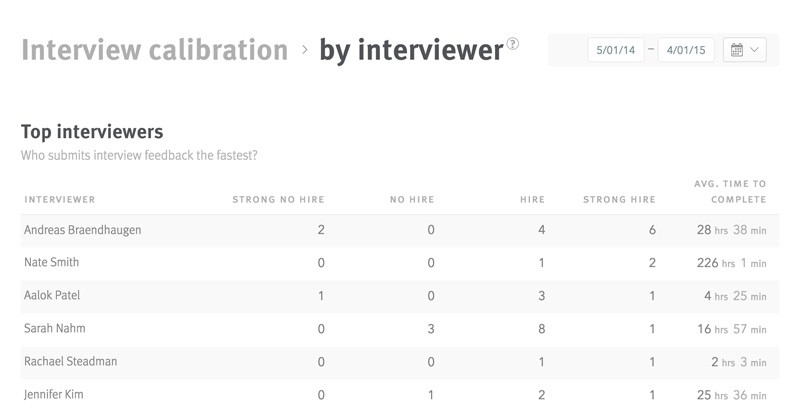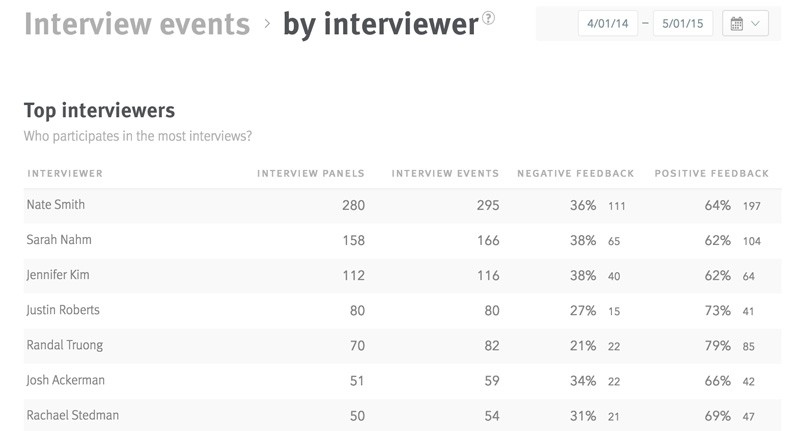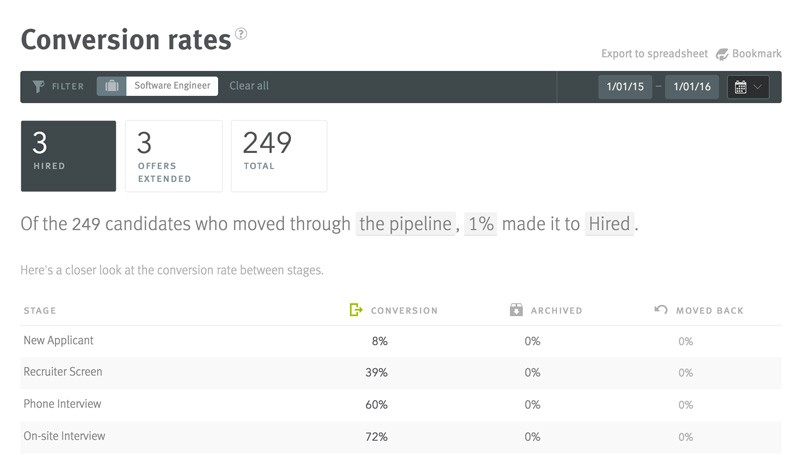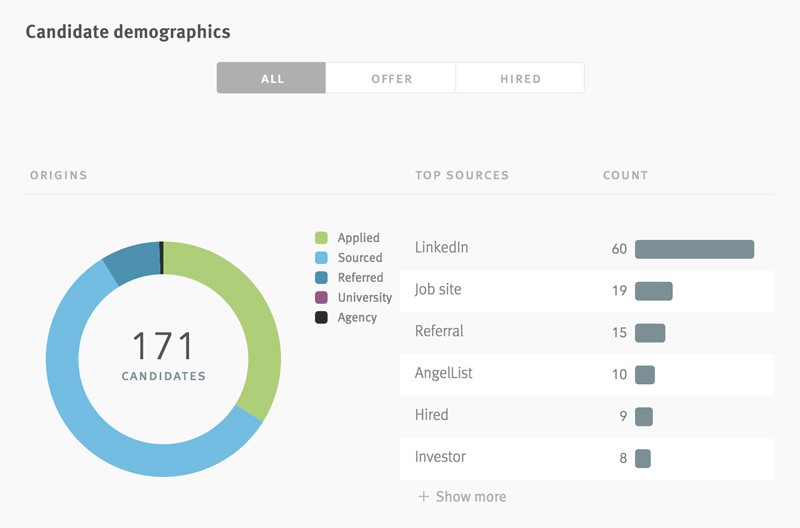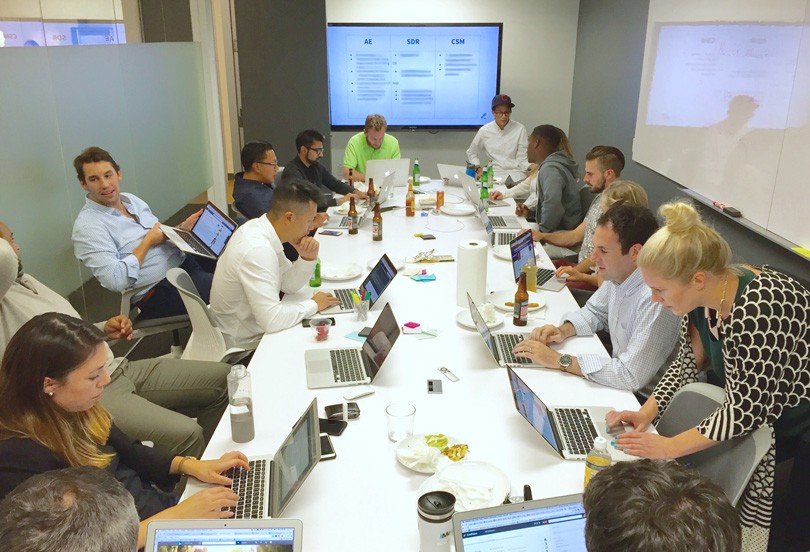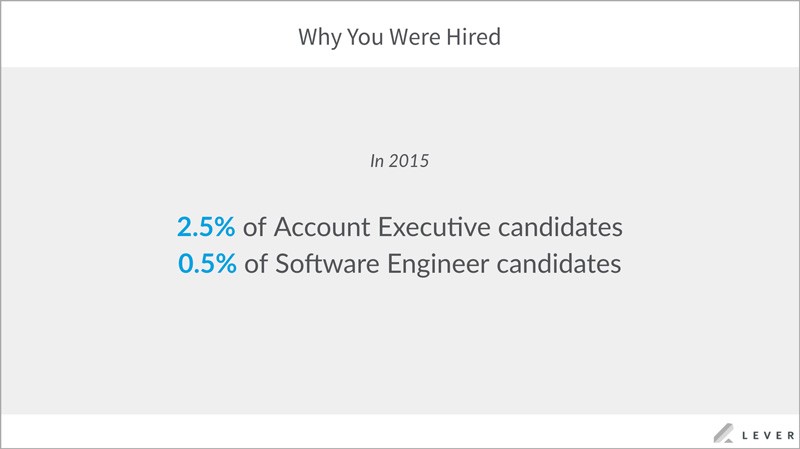Recruiting Analytics Made Simple: 5 Useful Reports You Should Pull From Your ATS Right Now
Ask a recruiter about their favorite hire, interview horror stories, or the best part of working at their company, and they’ll perk up and talk your ear off until you physically walk away. But when the topic turns to recruiting metrics, the enthusiasm evaporates, often to be replaced by guilt or a sense of defeat.
Many recruiters shy away from reports, and understandably so. Most of us are “people-people” – that’s why we’re in HR in the first place, so we wouldn’t have to deal with metrics and reports, right?
Maybe that’s how a lot of us got started. But data-driven recruiting has become a necessity, a skill to be developed and practiced for any modern-day recruiter who wants to go from good to great. That said, even the most tenured of talent professionals can break out in a cold sweat at complex Excel models or dread pulling reports from their Applicant Tracking System (ATS).
Whether you’re a one man-or-woman show, part of a talent team, or even a proactive hiring manager, the struggle around reports is universal. It may seem hard to know which ones are important, how to run analyses, and what to actually do with the insights. But, it doesn’t have to be like that. Here are 5 reports you can run, each in under 5 minutes*, to start improving your hiring process today.
*mileage may vary depending on your ATS!
1. Identify which interviewers submit feedback most quickly and recognize them for contributing to a speedy recruiting process
There’s nothing like chronically delayed feedback to put a damper on a recruiter’s otherwise productive day. Every recruiter I know dislikes having to chase after interview feedback, and in turn, most interviewers don’t understand why their recruiter is so desperate. Truth is, slow feedback causes unnecessary delays in the interview process, driving potential hires to accept a competing offer.
You can’t get rid of chronically late feedback overnight, but recognition and positive reinforcement of desired behavior will go a long way. Identify the fastest feedback submitters and challenge others to match their pace.
At an all-hands meeting last year, Lever awarded the “Speediest Feedback” award to two employees. The rest of the company received the clear message, how recruiting relies on quick feedback, and we saw immediate results in feedback submission times dropping. Your interviewers want to help more than you think – you just have to show them how.
(We also awarded the opposite, “Most Thoughtful” to lightly poke fun at our slowest feedback-submitters. They took it in good stride!)
2. Identify which teams are putting in the hours and effort, so the investment in recruiting is taken into the broader context
“Hiring Manager” or “Interviewer” is no one’s full-time role. These duties can mean an intense additional workload, and measuring hiring activity can produce valuable contextual insights. Recruiting is incredibly hard and time-consuming – at least, great recruiting is, and this effort must be understood by leadership and managers, because the people helping to recruit will have less time to work on their core jobs.
If the Marketing team has been going through a lot of growth recently, calculate out how many hours went into making those hires and acknowledge the extra work. If Sales is struggling, these stats could help provide guidance to show why Sales hiring managers should be prioritizing recruiting more.
Another example is an employee spending a disproportionate amount of time interviewing, and her productivity being impacted. Her manager should be provided these metrics so she can be recognized for her efforts, instead of getting burned out.
3. Identify the speediest, most efficient recruiting forces so others can learn from them
As a recruiter or hiring manager in a company of 20, you don’t need reports - you probably know exactly what’s going on, down to every on-site interview happening this week! But as your team grows, you’ll no longer have eyes everywhere, which is why you should invest in recruiting analytics early.
If you noticed that Customer Support is hiring faster than the Operations, how could you prove it? Maybe your investigation finds that it’s attributed to a particularly strong hiring manager on the Support team. Anecdotal evidence can only get you so far if your company is growing, so by calculating and analyzing “time-to-fill” and conversion rates across teams, you can identify strengths and weaknesses.
Observe what successful teams are doing differently to learn. Whether their recruiting performance is attributed to a well-developed evaluation criteria, a highly-engaged interviewing committee, or particularly effective closing strategies – use them as a case study and spread the knowledge to the rest of your company! Recruiters are the cornerstone of growth, and this is one of the most valuable ways to build process and level up hiring IQ of the entire organization.
4. Analyze where the best applicants come from to make smarter decisions about where to invest your efforts
When it comes to building teams, there is no one-size-fits-all solution. Recruiting across companies will vary depending on industry, size, stage, location, compensation, ideal candidate profile, etc… which creates entirely different processes, tools, and even recruiters’ styles. Similarly, applicants have a wide range of backgrounds, values, and goals, so where are your best potential hires? Uncover highest ROI sources through data.
For instance, a 500-person company could find that a high percentage of hires are referrals. To ramp up this channel, the recruiting team could initiate a formal referral program to communicate the importance and the highest-priority roles.
On the other hand, a smaller company of 50 may not yet have a vast employee network of referrals to cultivate, but might find sourcing and outbound targeting to produce best results. Knowing this, the recruiting team can spread the word about key positions and encourage others to start sending reach-outs to professionals in their industry, or they can even host monthly sourcing power-hours.
As opposed to blanket “spray and pray” methods, analyzing the origins of your candidates and hires will show you insights into the seemingly infinite recruiting tools available out there. Not all are created equal, and effectiveness will vary. No one can tell you the answer unless you dive into the reports yourself.
5. Pump up your employees by putting their hiring into perspective
These stats are shared with every Lever employee during onboarding:
Lever is known for having an extremely high bar when it comes to hiring, but nothing gets the message across quite like seeing the clear numbers behind it. These numbers are calculated by taking the number of hires and dividing by the sum of applications and referrals, demonstrating how competitive our roles can get.
With these numbers, new hires are reminded that they wouldn’t have gotten hired if we didn’t believe they could become high-contributors to the company. Considering I can run this report in less than 5 minutes, it’s a huge win for igniting a new hire’s motivation and excitement.
Recruiting analytics doesn’t have to be hard
Metrics can be daunting, and for valid reason – recruiting spreadsheets can get pretty gnarly – but there’s no excuse for avoiding them. Data will help you set goals, track progress, hold stakeholders accountable, uncover actionable insights, and ultimately drive a more informed recruiting strategy. Top recruiters understand this and use reports as a tool in their arsenal.
The best recruiters I know leverage their natural talents in EQ and people skills in addition to the analytical skills. The industry as a whole is going through a lot of change, and we’re going to see more and more exciting advancements as more of us embrace truly data-driven recruiting.
Whether you’re using Lever or another ATS, dive in and try running some reports yourself – you might be surprised by the results you get.
Want to learn more about recruiting analytics? I’m hosting a free webinar on this topic on Tuesday, Oct. 25: register here.
Connect with me on Linkedin and find me on Twitter - I’m a former recruiter and write about tips, learnings, mistakes, and everything in-between.
To receive blog posts like this one straight in your inbox, subscribe to the blog newsletter.
Topics: Talent analytics
Related articles



